Point-of-sale (POS) system inventory systems are software tools that retailers and restaurants use to process customer sales and track product or ingredient stock levels. The best POS inventory software includes tools for tracking stock levels in real-time across multiple locations, analyzing and providing reports on inventory data, performing counts, and integrating with a wide array of third-party software—all for under $100 per month.
The best POS inventory systems for small businesses are as follows:
- Lightspeed Retail: Best overall POS inventory system
- Square: Best free inventory POS for new & small businesses
- Lightspeed Restaurant: Best for restaurants
- IT Retail: Best for grocers & markets
- Shopify: Best for multichannel sellers
- Revel Systems: Best for multilocation retailers and restaurants
Best POS Inventory Systems Compared
Our Score (out of 5) | Monthly Software Fee | Multichannel Management | Vendor Management and Purchase Ordering | |
|---|---|---|---|---|
4.70 | $89-$339 | Yes | Yes | |
4.45 | $0-$165+ | Yes | With upgrade | |
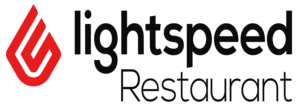 | 4.38 | $189-$399 | Yes | Yes |
4.36 | $49-$149 | Yes | Yes | |
4.27 | $5-$89 | Yes | With upgrade | |
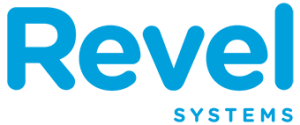 | 4.00 | Custom quote | Yes | Yes |
Many of the POS inventory systems in this guide are also listed among the best POS systems for small businesses.
Lightspeed Retail: Best Overall POS Inventory System

Pros
- Customizable matrix inventory with variants and assembled products
- Built-in purchase ordering, vendor directory, and product catalogs
- Work orders and customizable reports
Cons
- No free plan; software and hardware can get expensive for small businesses
- Complex user interface
- No tracking for perishable inventory
Overview
Who should use it:
Businesses with large inventories or that want custom variants, pre-set and custom reports, and purchase ordering; businesses that want to place wholesale orders through built-in product catalogs
Why I like it:
Lightspeed Retail includes granular inventory tracking, built-in purchase ordering, multichannel loyalty, inventory forecasting, and a highly sophisticated analytics platform with both preset and customizable reports. The system also offers built-in payment processing at reasonable rates, plus 24/7 chat support with all subscriptions.
However, you’ll need to upgrade your plan to unlock some inventory features. Lightspeed does not have a free plan, though you can take advantage of a free trial and annual pricing.
Also, Lightspeed does not support expiration date tracking in its retail plan, so if you operate a market or grocery, IT Retail is a better option. Lightspeed is also relatively expensive compared to other POS systems; if you need a free or low-cost system, Square is a better bet.
- Monthly software fees:
- Free trial: 14 days
- Basic: $109 (monthly) or $89 (annually)
- Core: $179 (monthly) or $149 (annually)
- Plus: $339 (monthly) or $289 (annually)
- Enterprise: Custom quote
- Lightspeed Payments processing fees:
- In-person: 2.6% + 10 cents
- Online: 2.6% + 30 cents
- Volume discount: For retailers processing more than $250,000
- Customizable matrixes: Sell unique product variations that are bundled and serialized, or case-broken to sell various quantities of the same product.
- Work order management: Process and follow work orders in the POS system.
- Categorization and tracking: Use serial numbers and/or stock-keeping units (SKUs) to identify each piece of inventory.
- Integrated vendor catalogs: With more than 3,000 preloaded catalogs, you can upload up to 10,000 items, consolidate all purchases into one order, set custom reorder points, and fulfill special orders for customers.
- Detailed analytics: Get more than 40 built-in reports, plus customizable settings, data visualizations, and actionable tips.

With Lightspeed Retail, you can access and view vendor catalogs from multiple suppliers and industries. You can also search for specific products, edit product information, and import item details into your inventory (Source: Lightspeed)
Square: Best Free Inventory POS for New & Small Businesses

Pros
- Free basic POS for unlimited locations and users
- Industry-specific POS software for restaurants, retail, and service businesses
- Free Square Online store with every account
Cons
- Advanced inventory features only available in higher plans
- Limited and inconsistent customer support
- Limited customization options for website and POS
Overview
Who should use it:
New businesses on a tight budget preferring an affordable, feature-rich POS system with affordable hardware; those needing restaurant or service business-specific tools that can scale
Why I like it:
Square includes features to process payments, manage customers, place orders, and control products. You can create a product catalog with a few clicks in the browser-based dashboard, and track inventory counts based on sales. Square is a top-of-the-line system that consistently takes the top spot in our list of the best POS systems for small businesses.
Square’s paid plans offer advanced inventory management tools, such as counting tools, barcode printing, and vendor management. You can expand your inventory functions with third-party integrations that support expiration date tracking and more advanced reporting. An online store builder tool is also available in the free plan. Finally, you can sign up for the Square CBD program, which allows you to sell some hemp-derived CBD products (for a higher processing fee).
However, a lack of customizable reporting in the mobile app plus limited or inconsistent phone support prevented Square from earning a higher score. Square’s inventory management is user-friendly, but it is not a good fit for established businesses with lots of SKUs or restaurants that need ingredient-level tracking. For matrix-level inventory management, you’re better off with Lightspeed Retail, and restaurants will be better served by Lightspeed Restaurants.
Monthly software fees:
- Square POS: Free
- Square for Retail: $0-$89 per location
- Square for Restaurants: $0-$165+ per location
- Square Appointments: $0-$69 per location
- Contract length: Month-to-month
Square Payments processing fees:
- In-person: 2.5% + 10 cents to 2.6% + 10 cents
- Online: 2.9% + 30 cents
- Afterpay: 6% + 30 cents
- Volume discounts: Custom pricing is available for businesses processing more than $250,000 annually.
See our guide to Square Pricing and Fees for more pricing information.
- Free features: The basic Square POS inventory supports unlimited SKUs and item categories, tracks inventory in real-time across unlimited locations, and can even auto-generate new items from scanned barcodes.
- Square for Retail Plus: The highest-level Square subscriptions offer expanded inventory tools. Plus users can receive stock shipments, adjust stock levels for returns and exchanges, create and send POs by email, create vendor lists, create item libraries for each vendor, track inventory value by item, and view cost of goods sold and other advanced reports.
- Integrated ecommerce site: All Square accounts come with the free Square Online store. You can quickly build your site using Square’s setup wizard and host it on your own domain or for free on a Square-affiliated domain. Your stock levels sync across your Square system, so if you sell out of an item in-store, your online store updates automatically. We’ve put together a full review of Square Online.
- Inventory management: While not as extensive as Lightspeed’s inventory tools, Square is no slouch with inventory management. You can track your products in real time, import items in bulk and adjust quantities, automate purchase orders, manage multilocation inventory, and receive daily emails that detail low-stock products. You can even custom set your low-stock alert quantity for each product so you never miss a beat.
- Mobile app: Download the Square mobile app to turn any phone or tablet camera into a barcode scanner—perfect for making sales on the go or performing inventory counts.
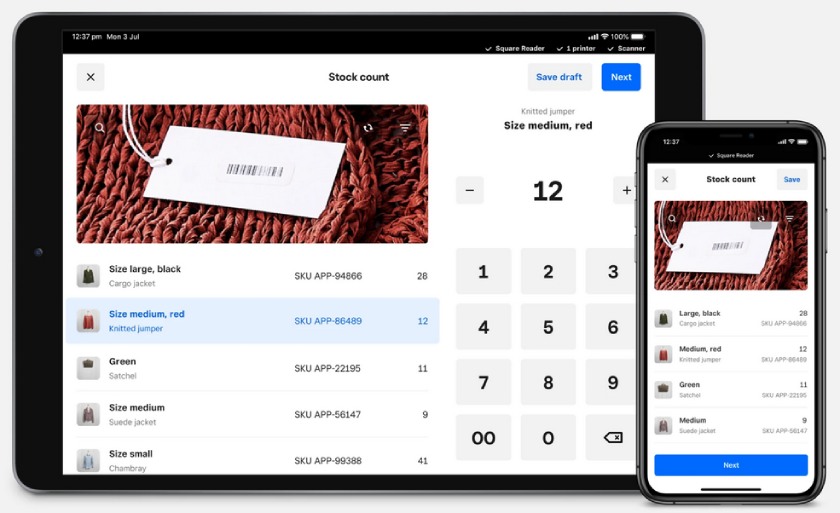
Using Square’s Stock Count tool, you can count stock and update quantities directly in your POS (requires a Plus-level subscription). (Source: Square)
Lightspeed Restaurant: Best for Restaurants
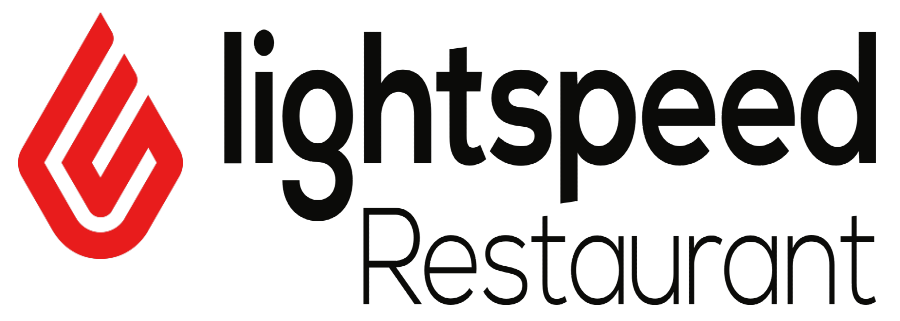
Pros
- Ingredient-level tracking with low-stock alerts
- Vendor management and purchase orders
- Customizable inventory fields
Cons
- Raw API access only available at highest subscription tiers
- Expensive monthly subscriptions
- Offline functionality not as strong as in other systems
Overview
Who should use it:
Restaurants of any type and size—from cafes to full-service businesses
Why I like it:
Lightspeed Restaurant—like its counterpart, Lightspeed Retail—is a user-friendly cloud-based POS solution.
The restaurant system’s inventory tools have always been ingredient-level, but with Lightspeed’s acquisition of Upserve, the restaurant inventory tools have become even more automated, including tools for automatically generating orders when you run low on ingredients, low-stock alerts, and advanced reporting that includes cost of goods sold. What’s more, most of Lightspeed Restaurant’s features are available even in its lowest plan.
Lightspeed Restaurant’s only real drawback is the price. Custom processing rates and API access are only included in the higher of the two subscription levels; these subscriptions cost $189 and $399 per month. If you need restaurant-level inventory tools included in a more affordable or free baseline POS, try Square’s restaurant software instead.
- Monthly software fees:
- Essential: $189
- Premium: $399
- Enterprise: Custom-quoted
- Lightspeed Payments processing fees:
- In-person: 2.6% + 10 cents
- Online: 2.6% + 30 cents
- Volume discount: For retailers processing more than $250,000
- Custom processing rates: Available in the Premium subscription
- Flexible hardware: You can operate Lightspeed Restaurant on your internet browser or iOS device, including smartphones. Managers can view reports and process orders and payments tableside or at offsite events. You can also view and edit purchase orders, receive stock, add suppliers, and add barcodes to track and scan inventory items.
- Easy physical counts: You can create custom count sheets that match each of your storage areas and count items by barcode scan or tablet or use the free inventory smartphone app for Android or iOS smartphones.
- One-click reordering: Once you set order points and enter all your vendor information, your Lightspeed Restaurant POS will automatically generate suggested orders when you run low on stock. Orders are arranged by vendor, and you can place simultaneous orders with multiple vendors by clicking a single button.
- Recipe cost calculations: Lightspeed will estimate the cost per recipe and its margins based on its ingredients/ingredient-level price fluctuations and its menu price.
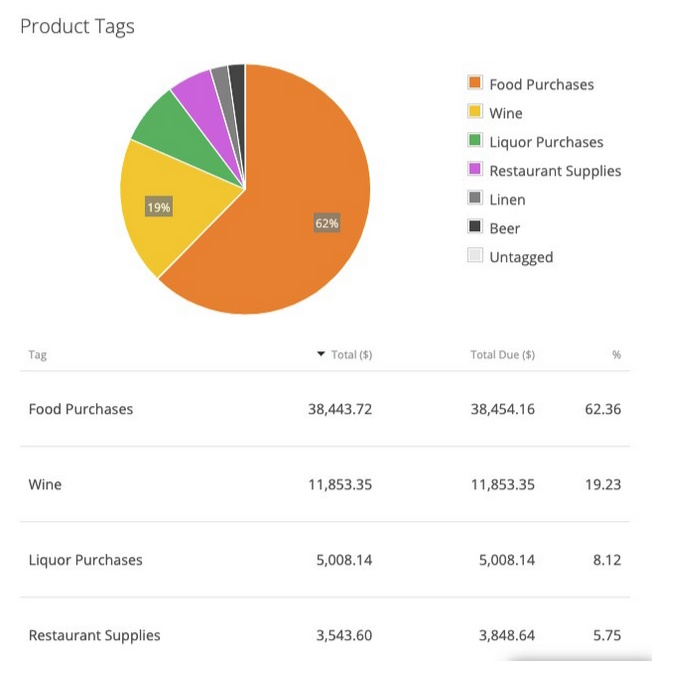
Lightspeed Restaurant inventory tools (via Upserve) let you modify stock counts from multiple devices and provide reports on food costs and profits. You can also create suppliers and catalogs, and use tags to group related products together. (Source: Lightspeed)
IT Retail: Best for Grocers & Markets

Pros
- Industry-grade hardware stands up to high-volume use
- Tracking of expiration dates of perishable items
- Case-breaking for case and individual bottle sales supported
Cons
- Hardware prices not listed publicly
- No free trial or free plan
Overview
Who should use it:
Markets, grocers, and other retailers that want to sell perishable items or track products by lots and expiration dates
Why I like it:
IT Retail is a comprehensive POS designed for markets, supermarkets, and other stores that manage both perishable and non-perishable goods. It includes essential grocery features like electronic benefits transfer (EBT) and Special Supplemental Nutrition Program for Women, Infants, and Children (WIC) compliance and scale integration.
It earned massive points for its niche inventory functions like the expiration date tracking mentioned above. It also scored well for ease of use. However, there is no free plan or free trial available.
If you are a high-risk business like a vape shop, IT Retail will not support your business as it does not have the tools to process age-restricted products; you should try Square instead. And if you run a restaurant, IT Retail cannot track items to the ingredient level; check out Lightspeed Restaurant instead.
Monthly software fees:
- IT Retail Subscription Plans:
- Starter: $49
- Growth: $99
- Premium: $149
- Customized Plan: Add POS hardware kits, accessories, and add-ons to your software subscription for a custom price
- Installation fee: Optional, custom-quoted
IT Payments processing fees: Rates vary by business type, sales volume, and card mix. Flat and interchange-plus rates are available. IT Retail does not disclose processing rates on its website.
- Purchase order management: You can create POs in your IT Retail dashboard based on low stock alerts or generated from completely new items. You can choose to receive stock with or without an accompanying order, and can also create an invoice after you pay the supplier.
- Shrinkage tracking: IT Retail generates a shrinkage calculation by comparing your sold items with items received and previous inventory counts. This can alert you quickly to spoilage, breakage, or theft.
- Lot and expiration date tracking: Expiration date tracking helps your team adhere to the principle of first-in, first-out (FIFO). It also ensures that you sell items before they expire so you can make your expected profit margin and keep your sales on track.
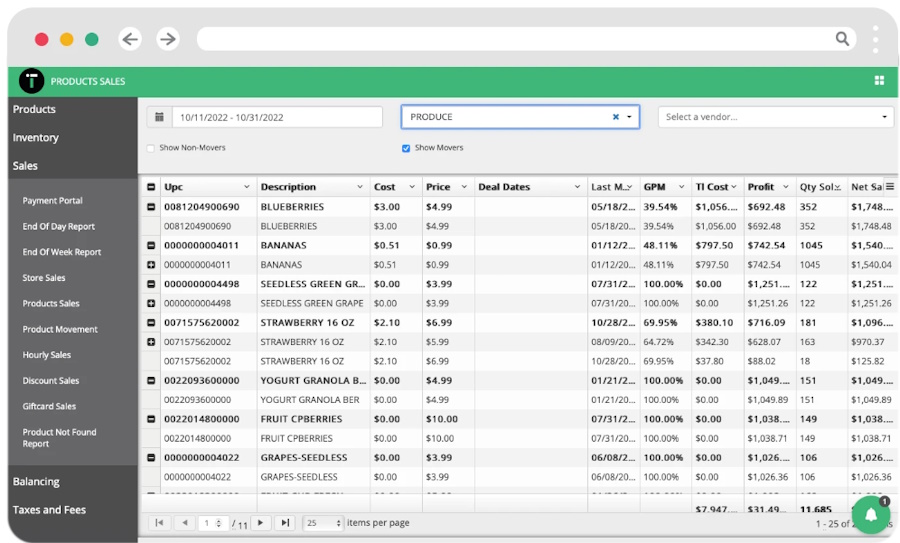
IT Retail’s inventory management tools let you create purchase orders, receive items, get alerted when stock is low, view individual items, and edit products in bulk. (Source: IT Retail)
Shopify: Best for Multichannel Sellers

Pros
- Top-ranked ecommerce platform
- User-friendly mobile app
- Selling tools for online marketplaces, social platforms, and Google Shopping
Cons
- No automation features
- Payment processing fees can get high
- Limited offline capabilities
Overview
Who should use it:
Businesses intending to sell both online and in person, while managing everything from a centralized platform and those wanting integrated barcode scanners, detailed inventory reporting, and stock monitoring tools
Why I like it:
Shopify’s POS inventory system earned points for its cross-channel inventory management features and great POS app. The system has great inventory features in general, including granular multilocation and multichannel inventory control, purchase ordering tools, mobile apps, and a user-friendly interface. With integrations, you can also get specialized tracking tools for things like perishable inventory. Shopify also offers 24/7 customer support.
Shopify mainly lost points for its lack of a free POS plan, short free trial, and requiring a third-party inventory management app for some advanced inventory management functions like low-stock alerts.
- Monthly software fees:
- Free trial: 3 days, and then $1 for the first month
- Starter/POS Lite: $5
- Retail/POS Pro: $89
- Shopify Payments processing fees (depends on plan):
- In-person: 2.4% + 10 cents to 5%
- Online: 2.5% + 30 cents to 5% + 30 cents
- Omnichannel selling: Centralized inventory management allows for easy omnichannel transactions, including buy online, pick up in-store; buy online, return/exchange in-store; and buy in-store, ship to customer.
- Smart inventory management and status tracking: Transfer products between locations, perform quick counts using a barcode scanner, and receive orders with a barcode scanner. Track and share the status and location of products as they are received and transferred, and as orders are fulfilled.
- Purchase ordering: Create and manage POs; track vendors and suppliers.
- Stocky app: Stocky is an inventory management app by Shopify for POS Pro users. Many of the Shopify inventory features can be managed through Stocky.
- Shipping labels: Browse discounted shipping rates from all major carriers and print your package label right from your account.
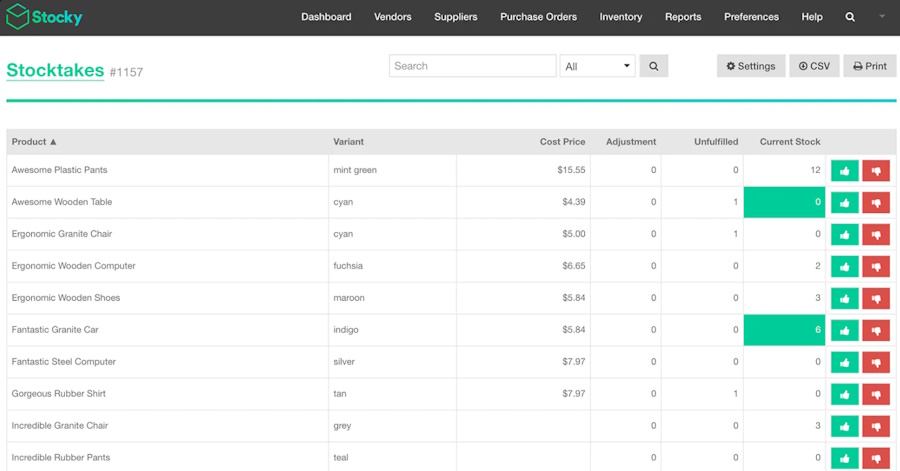
The Stocky app by Shopify allows users to access advanced inventory features: purchase orders, in-depth reports, stock levels, variants, and more. (Source: Shopify)
Revel Systems: Best for Customization & Multilocation Management

Pros
- Detailed and extensive inventory tools
- Flexible payment processing options
- Good offline functionality
Cons
- All pricing is custom-quoted and not transparent
- No customized reports
- No perishables tracking
Overview
Who should use it:
Businesses that want centralized multilocation reporting, flexible payment processing, and good offline functionality in a cloud-based POS
Why I like it:
Revel Systems is a cloud-based POS system that is well-suited for restaurants, bars, and cafes, particularly those with multiple locations. It has strong inventory management features, including ingredient-level tracking, low-stock alerts, purchase ordering tools, and more. It lets you view reports, create and edit menus, and manage complex inventories for multiple store branches from anywhere.
Revel’s main drawback is the lack of pricing transparency; all prices are custom-quoted, and the website doesn’t provide any clues or ballpark figures about how much you can expect to pay.
- All monthly pricing and payment processing rates are custom-quoted; call Revel Systems to get an exact figure.
- Payment processing options include Revel Advantage (the software’s built-in processor), First Data, Heartland, TSYS, and Worldpay.
- Inventory management: Revel’s inventory management tools include ingredient-level item tracking, product variants, automatic low-stock alerts, purchase orders, and an inventory management app that lets you scan items with your smartphone. You can also categorize and display inventory items in your POS by size and color.
- Multilocation management: As long as you have your iPad handy, you can access reports and menu controls, manage stock for multiple locations, monitor online ordering and delivery, and more—all from a centralized POS dashboard
- Mobile Order Taker: Provide your restaurant staff with a purpose-built mobile device for taking customer orders at tableside. The Revel Mobile Order Taker makes the ordering process faster and easier for both your employees and your customers. Staff can also check updated menus on the device, as well as send orders directly to the kitchen.
- Self-service kiosk: The Kiosk XT is Revel’s self-service solution that lets customers place orders and pay without any involvement from your staff. This not only reduces interpersonal contact (which some customers prefer) but also frees up your employees to perform other tasks. The Kiosk XT supports upsells and loyalty rewards and can accept Revel gift card payments.

Revel’s matrix inventory features let you specify product variants or attributes such as size and color. (Source: Revel Systems)
What to Look for in the Best POS Inventory System
All POS systems have some degree of inventory management capability. However, if you are looking for a POS system that can support more advanced inventory management, look for these features in particular:
Maximum Number of Inventory Items
Many POS systems allow you to log and track an unlimited number of inventory items, but some do not. In particular, you need to be aware of what functionality is available for each subscription plan of the POS you have in mind. Some providers might offer unlimited inventory tracking only in their higher-tier plans, for example, but not in the lower ones.
Locations and Sales Channel Syncing
If you have multiple locations or sell on multiple sales channels, be sure to choose an inventory POS system that has omnichannel syncing. This means that as sales are made at one store or on a certain sales channel, inventory levels will adjust across all your systems. Many cloud-based POS and inventory management systems automatically sync stock levels across all sales channels; some systems with omnichannel syncing also allow you to assign products to certain locations. This is helpful for businesses with multiple locations to manage, or those that use warehouses for storage.
Variants & Modifiers
Granular, detailed inventory management means not only monitoring the items you have in stock but also being able to track variants and modifiers for each of these main items as well. For example, apparel stores need to know not only how many items they have in stock, but also what sizes and colors.
Some POS providers allow you to do this easily from the software dashboard, while others might require more tinkering within the system. Some might also require an additional fee or higher subscription to unlock variant tracking, so again, you’ll need to be clear about what features are available in the plan you choose.
Low Stock Alerts
Low stock alerts are a crucial tool for real-time inventory management. With these alerts enabled, the software will automatically notify you (via email or some other means) when a particular item in your inventory reaches critically low levels. This lets you keep your inventory levels up and avoid stockouts that result in missed sales and annoyed customers. It also allows you to manage or automate your vendor management and purchase ordering.
Inventory Counting Tools & Hardware
A good inventory management POS should include tools for counting inventory; this may take the form of software such as a dedicated inventory counting app, or hardware such as a purpose-built scanner or other handheld device. Be sure to check whether your chosen POS system has this software or hardware and whether this feature will require additional fees or hardware purchases. Our inventory management workbook will help you get started with basic inventory management tasks like performing counts and preparing purchase orders.
How I Evaluated POS Inventory Systems
I considered the top POS systems on the market before narrowing down our list of the best POS inventory inventory management software. I evaluated each system based on monthly fees, general features (including reporting), and inventory features (including low-stock alerts and purchase ordering). I also covered ease of use (such as whether or not the system is cloud-based). Finally, I looked at the overall value each software provides for its price point and considered popularity and user reviews.
Click through the tabs below for a full breakdown of how I evaluated POS systems with inventory management:
10% of Overall Score
30% of Overall Score
30% of Overall Score
Here we looked at harder-to-find features including a mobile app for counting inventory and/or receiving orders, built-in barcoding, purchase ordering, vendor management, and customizable fields. We also awarded bonus points for specialized tracking such as perishable goods, expiration dates, and case-breaking.
10% of Overall Score
Busy retailers need a POS system that is functional offline and has 24/7 customer support. We also awarded points to touch-screen systems because they are easy for employees to learn and use. Cloud-based systems earn points as they allow businesses to access data anywhere.
20% of Overall Score
Frequently Asked Questions (FAQs)
Click through the questions below to get answers to some of your most frequently asked POS inventory system questions.
A POS is a complete software and hardware package that processes sales and payments. An inventory system simply tracks stock as it arrives onsite and is sold. An inventory system may be integrated or built into your POS, or it may be a manual system (like spreadsheets) that you run alongside your POS. Whatever inventory system you use, it won’t have the ability to process sales and payments like a POS does.
Since POS systems handle sales transactions, even a basic POS can track whole items as you sell them. But certain businesses need more than basic tracking; you might need to track expiration dates for bulk ingredients or various sizes and colors of the same item. If you need specialized tools like this, look for a POS or inventory tracking system designed specifically for your industry.
Lightspeed is the POS with the best inventory management software. It can track your stock at a granular level, provide in-depth reports, give suggestions based on inventory data, and allow you to order many items right on your POS from Lightspeed pre-downloaded products and vendor catalogs.
When your inventory management system is part of your POS, you never have to integrate the two systems so your sales and inventory levels can stay in sync in real time. Not only that, your POS system will include all your sales channels, so your inventory levels will be updated across channels without any manual actions needed on your part.
In addition to real-time tracking, reporting tools, and purchase ordering that you should look for in all inventory systems, restaurants should look for ingredient level tracking, expiration management, and the ability to manage high-risk inventory.
Bottom Line
Every retail and restaurant business needs to process sales and reorder supplies and products. A POS inventory system allows businesses to handle all of those needs in one place—you can ring up sales, track products, analyze data, and reorder products easily.
Lightspeed Retail includes tools that let you manage large and complex inventories, create and view extensive reports, arrange purchase orders, and more. While you’ll need to pay for the higher plans in order to unlock more features, it’s hard to beat Lightspeed’s sheer inventory management power. Visit Lightspeed Retail and try out the system with a free trial.